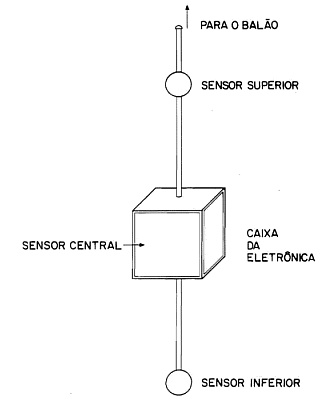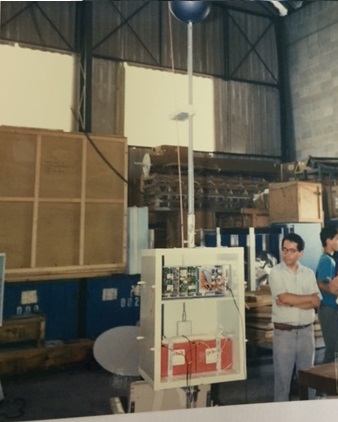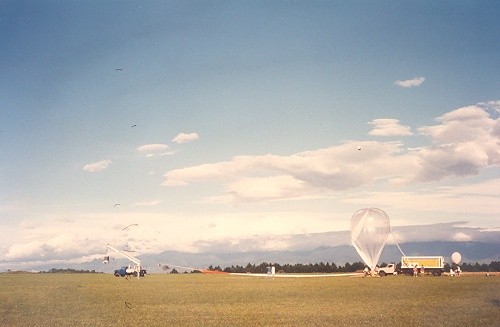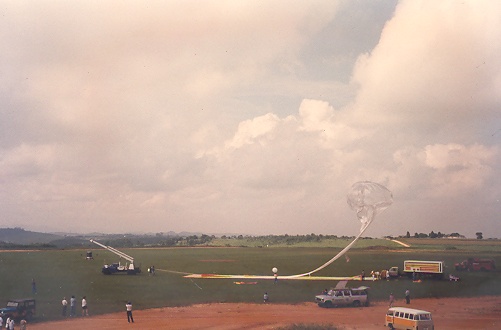Purpose of the flight and payload description
The electric field detector consisted of a pair of probes aligned in the vertical. The probes were two espheres with a diameter of 22 cm. The distance from each of the vertical probes to the central box was 1.6 meters. To minimize the incidence of solar radiation in the probes, mainly for wavelengths between 199 and 230 mm, which would produce photoelectrons altering the signal, the probes were painted with a aqueous carbon solution ("aquadaq"). The arms on which were mounted the probes must have high impedance, so these were made of fiberglass.
The two probes worked as a parallel circuit for the electric current. Thus, in order to not distort the field to be measured, the internal resistance that linked the conductors was greater than that of the atmosphere. For this purpose the signals originated in the probes passed through an impedance cascade. These signals, both AC at 2 KHz measured at probe as DC, were transmitted multiplied by different factors, in order to be able to measure different amplitude ranges of existing electric fields.
The experiment also included an altimeter consisting of a Sensyn type pressure sensors, as well internal and external temperature sensors. Finally the tracking of the balloon was done by an onboard OMEGA transmitter.
Details of the balloon flight
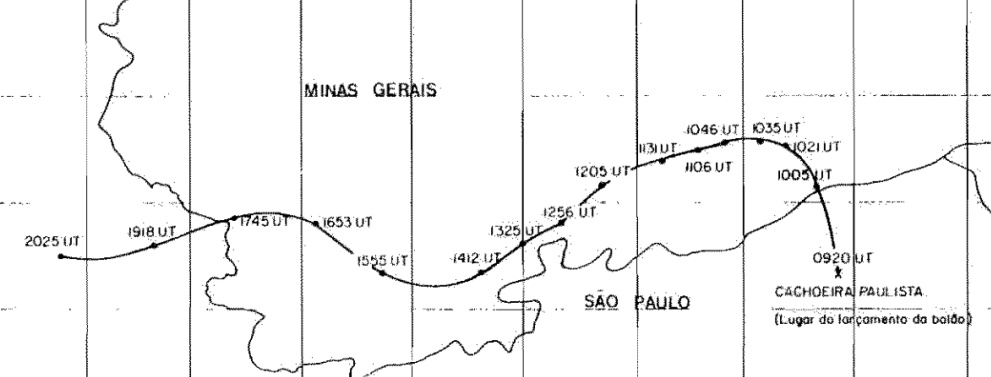
Balloon launched on: 12/13/1989 at 9:20
Launch site: Balloon Launch Sector, Cachoeira Paulista, Brazil
Balloon launched by: Instituto Nacional de Pesquisas Espaciais (INPE)
Balloon manufacturer/size/composition: Zero Pressure Balloon 7.500 m3
End of flight (L for landing time, W for last contact, otherwise termination time): 12/13/1989 at ~ 20:30
Balloon flight duration (F: time at float only, otherwise total flight time in d:days / h:hours or m:minutes - ): 11 h
Landing site: In Mogi Guacu, Sao Paulo, Brazil
Payload weight: 33 kgs
The balloon was launched by dynamic method from the INPE balloon base in Cachoeira Paulista, at 9:20 local time. The balloon initially moved to the north while ascending but soon after reaching float altitude of 32 km it started in a westward course that will lead it to cross the Minas Gerais State as we can see in the map at left (click to enlarge).
After 11 hours of flight, the mission was terminated by telecommand. The payload was recovered in Mogi Guacu, Sao Paulo State, Brazil.
External references
- A infraestrutura do INPE para lancar balao cientifico Elisete Rinke dos Santos, editorial Transtec, 1993
- Estudo coordenado de um sistema de tempestade sobre a América do Sul Thesis by Gin, Rosangela Barreto Biasi
- Estudo mostra comportamento das nuvens de tempestades Revista Espacial - Ano 18 - Nº 79 Pag. 4
279If you consider this website interesting or useful, you can help me to keep it up and running with a small donation to cover the operational costs. Just the equivalent of the price of a cup of coffee helps a lot.

